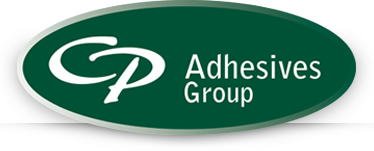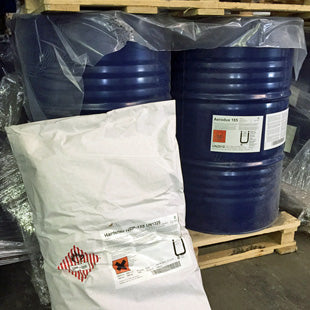Veneer Checking
Checking of face veneers is a phenomenon that has been prevalent in the plywood industry since its inception. Basically, it is caused by loss of moisture in the face veneer resulting in shrinkage of this component. As the dimensions of the veneer change, stresses are set up between the face and the core. Actually such stresses are nothing more than a restraining action of the more stable core. When these forces reach the point where they exceed the structural strength of the veneer, a rupture of the fiber takes place. This, in effect, appears as a “check” or “split” on the surface. These checks naturally follow the weak zones such as lathe checks, pores or splices in the veneer.
It is a known fact that this condition commonly occurs during periods of low humidity such as in winter months. Furniture subjected to dry heat during this time of year tends to dry out or lose moisture. The greater the loss in moisture, the greater the shrinkage and resulting stresses.
Serious veneer checking can be greatly reduced and, in some instances, eliminated by controlling the manufacturing techniques during panel production. Conditioning of the panels subsequent to manufacture should not be underestimated and care should be excised in carrying out this part of the process. The more important factors which affect the degree of checking in face veneers are veneer species, type, thickness and moisture content, as well as, type of core material and construction methods such as number of plies, adhesive, moisture and spread, assembly time and pressing conditions. The role of each of these variables will be considered individually as to its relationship to veneer checking.
Veneer Species and Types
Generally speaking, species that are highly porous or "ring porous" such as oak and walnut are very susceptible to checking. This is also true of those woods having a high degree of figure. Density may also have an effect with the greater density woods exhibiting the most checking. There will, of course, be some overlapping between various types of wood and no hard or fast rules can apply.
Veneer Moisture Content, Thickness and Quality
Veneer moisture content at the time of panel manufacture is very important and may well be the deciding factor in whether or not checking results. If moisture contents of this stock are held between 4% and 5%, very little trouble should develop. If, on the other hand, moisture content of the veneer reaches a level of over 8%, a serious checking condition may occur. When veneer is rotary cut minute breaks or splits known as lather checks are apparent on the concave side. This is commonly referred to as the "loose" side as opposed to the "tight" or convex side. These checks are more severe with thicker veneers over 1/8" in thickness. It is obvious, therefore, that thick veneer will result in greater surface checking as opposed to those veneers cut on the order of 1/28" in thickness. Gluing panels with the tight side out would be beneficial. Quality of veneer used is extremely important as defects greatly enhance the possibility of surface checking by providing additional weak zones.
Core Material
There are three materials commonly used as a core for veneer faced furniture panels, i.e. lumber core panels, plywood and particle board. It is a recognized fact that surface checking is more prevalent with cores made from particle board than the lumber core or plywood. Slightly less checking is encountered with lumber cores than with plywood. Particle board is extremely stable in all dimensions and would; therefore, result in greater stresses developing between the veneer and the core. This would mean a more pronounced checking on the surface unless moisture content during manufacture is closely controlled. Core moisture should preferably be between 4% and 6%.
Panel Construction
The two basic types of veneered panels for furniture are 3 and 5 ply construction. Since 3 ply panels are not common with lumber cores due to telegraphing of defects and glue joints, this discussion will be limited to cores of plywood and particle board. Generally speaking, 3 ply construction is more prone to surface checking than 5 ply. This is due to the action of the cross band in 5 ply panels which more or less helps to neutralize or counteract the stresses set up during drying of the face veneer. Cold pressing may indicate more surface checking than hot pressing. Hot pressing results in more moisture removal during pressing. Consequently, a higher initial moisture content of the veneer can be tolerated. In other words, there is definitely more residual moisture in a cold pressed panel and; therefore, more ultimate shrinkage. It is safe to assume that moisture contents of veneer designated for hot press panels can be as high as 8% for 3 ply and 10% for 5 ply construction. A limit or maximum of 6% appears to be reasonable for cold press operations.
Glue Up
Actual gluing of the panels is very important due to the moisture added with the adhesive. Spreads should not be over 30-35 pounds/ms.f.g.l. for hot pressing and 40-45 pounds/ms.f.g.l. for cold pressing. Mixes should be as heavy or at as high a solids level as possible. In order to prevent excessive penetration or moisture into the stock, closed assembly times should be held to a minimum. This prevents swelling of the face veneer before pressing has been carried out.
Conditioning of Panels
Immediately after the pressing operation, panels should be allowed to condition to an E.M.C. of approximately 6%. If excess moisture is present, a hot conditioning area may be required. On the other hand, excessively dry panels may well have to be humidified. All stock should then be maintained at this moisture content until sanded and finished.
Summary
In order to minimize surface checking of face veneers in furniture panels, certain techniques should be controlled as closely as possible. Considerable thought should be given to veneer species, thickness, moisture content, quality and type as well as to recommended production procedures. All have a direct effect on the degree of surface checking which may result. If one will follow the recommendations listed in this bulletin, the chances of reducing or eliminating surface checking are improved considerably.
- Choosing a selection results in a full page refresh.
- Press the space key then arrow keys to make a selection.













